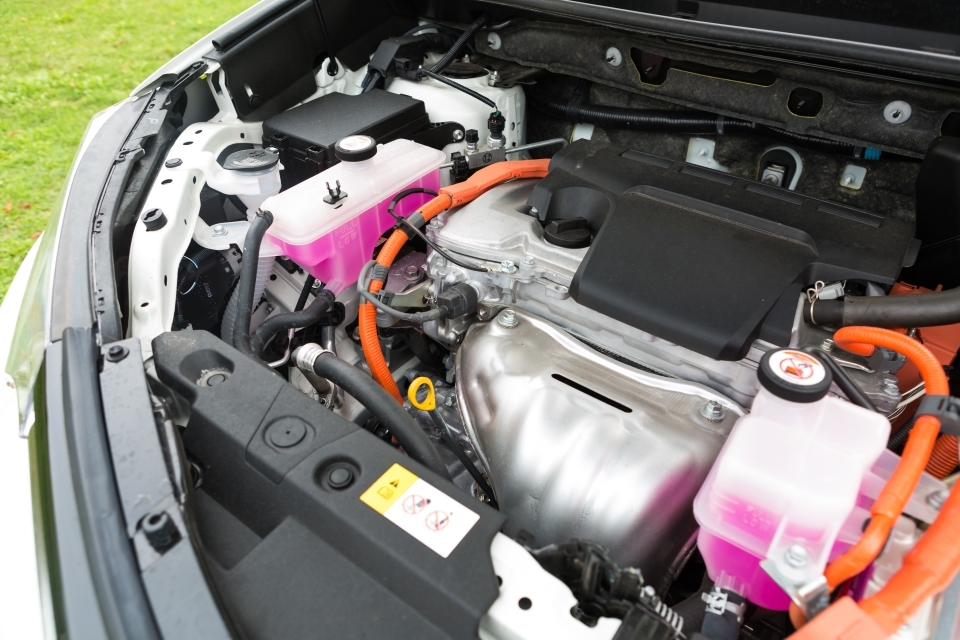Hybrid, electric and hydrogen fuel cell systems: guidance for MOT testers
Updated 1 May 2021
Applies to England, Scotland and Wales
Overview
This guide briefly explains:
- some of the different vehicle technologies you could come across as an MOT tester
- the things you need to be aware of when inspecting these vehicles
Some vehicle makes and models may have systems that are slightly different to those described in this guide. Check the vehicle’s handbook or speak to the owner or manufacturer for more information about the vehicle.
1. Hybrid
Hybrid vehicles have 2 different sources of stored energy - usually petrol and electricity.
There are 3 common types of hybrids used in light vehicles:
Full hybrid
Full hybrids can drive the wheels:
- directly from the engine through a mechanical automatic gearbox only
- by electric power only
- by using both electric power and the engine
In full hybrids, the engine and battery can run independently or seamlessly together. The energy from the battery can be used directly to power the vehicle, usually for a short distance or at slower speeds.
The engine is used as a standalone power source to provide extra power to supplement the electric motors whilst driving and as a generator to recharge the batteries.
Examples include:
- Toyota Prius and Auris
- Lexus CT200h and IS300h
Mild hybrid
In mild hybrids, the engine drives the vehicle mechanically through an automatic or manual gearbox. The battery provides extra energy, but this cannot be delivered independently.
The power is not delivered directly to the wheels, instead the motor generator is an auxiliary component used to assist the engine’s own performance and efficiency.
The motor generator can also act as a starter motor and an overrun generator to charge the battery. These systems usually run on 48 volts.
Examples include:
- Suzuki Swift
- Ford Puma
Plug-in hybrid electric vehicles (PHEVs)
PHEVs are very similar to full hybrids, but they can also be charged from an external supply.
Examples include:
- Mitsubishi Outlander PHEV
- Toyota Prius Plug-in
2. Electric vehicles
These vehicles are driven by stored electrical power only.
Common examples are:
- Tesla range
- Nissan Leaf
- Renault Zoe
Range extenders
Range extenders are designed to run on batteries which are usually charged from an external supply. This power lasts for a limited period of time - longer journeys will start the engine.
However, the vehicle is always driven electrically even when the engine is running. The engine is used to drive a generator only.
Common examples of range extenders include:
- Vauxhall Ampera
- BMW i3
3. Hydrogen fuel cells
Hydrogen fuel cell technology work like a battery. Oxygen and hydrogen are fed into the cell. Under the action of catalysts, water (in the form of invisible superheated steam) and electricity are produced to provide energy to drive the wheels through electric motors.
There are only a few in the country at present, such as the Honda Clarity and the Toyota Mirai.
There are also some buses running in London.
4. Carrying out MOT tests
You cannot refuse to carry out an MOT test on one of these vehicles just because you’re not familiar with them.
You should be careful when you check under the bonnet and under the vehicle as the internal combustion engine may start without warning when electrical equipment is operated or if the battery voltage drops.
Driving and ignition states
Starting the vehicle will make the vehicle ready. Some vehicles have a ‘ready’ symbol or equivalent on the dash - this is usually green.
Pressing the accelerator will make the vehicle move (whether the engine is running or not) if the ‘ready’ symbol is lit.
You need to know how to safely:
- start the vehicle and move off
- stop and immobilise the vehicle
If you’re unfamiliar with the vehicle, you can check the owner’s handbook or ask the customer to explain how to do this.

The 'ready' symbol can look different on different types of vehicles.
Turning the ignition off
Turning the ignition off in an electric or hybrid vehicle will make the vehicle not ‘ready’ and will make sure the vehicle cannot start or move off.
If the vehicle has a conventional key, remove it so you can inspect the vehicle safely.
If the vehicle has a ‘smart key’.
Most hybrids and electric vehicles have ‘smart keys’. These usually have a start/stop button and keyless entry.
As a general rule, you should follow these steps.
-
Put the vehicle in ‘park’ with the parking brake applied.
-
Shut the system off with the ‘start/stop’ button.
-
Check that no warning lamps are lit.
-
Remove the smart key from the vehicle and then store it at least 3 metres away.
When you need the ignition on
Some parts of the test will need the ignition on but the engine not running, such as when you check ABS or SRS warning lights.
If the vehicle has a conventional key, move the key to the accessory position.
If the vehicle has a ‘smart key’.
Some vehicles go to an ‘ignition on’ state as soon as they are unlocked. If they do not, you should follow these steps.
-
Turn the ignition off and put the vehicle in ‘park’ with the parking brake applied.
-
Check that no ‘ready’ warning lamps are lit.
-
Without touching the brake pedal, press the ‘start/stop’ button.
-
The ignition should now be on. Any ‘ready’ indications, if fitted, should not be illuminated.
When you need the engine running
You may not be able to have the engine running for some parts of the test that would usually need it. You can simulate this by having the vehicle in ‘ready’ mode. In ‘ready’ mode all equipment will work as if the engine were running.
You should use an assistant for this if possible, even if you’re using a one-person testing bay.
Make sure they:
- are fully briefed
- do not touch the accelerator
- hold the foot brake on when carrying out turn plate checks
Risk from high-voltage systems
Hybrid and electric vehicles do not pose any more of a risk than a conventional vehicle when carrying out an MOT test.
However, all electrically powered vehicles pose a theoretical risk because of the very high voltage used in these vehicles. This is usually between 350 volts and 600 volts.
Identifying electric vehicles, cables and components
To make sure that the vehicle you are working with is a hybrid or electric vehicle, look for:
- badges that identify the vehicle as hybrid or electric
- charging plugs
- high voltage cables - these are usually orange, but 48 volt systems on mild hybrids may be blue
High voltage components
You should avoid touching any high voltage components and wiring when carrying out an MOT test.
The high voltage components on these vehicles are usually inaccessible. When they are accessible, they will be well insulated and do not present a high risk.
Many mild hybrids use 48 volt systems. These are not high voltage and may have blue wiring insulation instead of orange. You should still avoid touching the wiring on these systems.
Unless stated otherwise, you do not need to fully isolate the high voltage systems when carrying out an MOT test.

Electric cables and some components are usually orange to make them easy to identify. 48-volt systems on mild hybrids may be blue.
Managing risk when working with these vehicles
The risk of electric shock with electric and hybrid vehicles is extremely low. They have extensive safety systems and will shut down and isolate the battery if they sense a fault or damage within the high voltage system.
To keep the risk low you should:
- do a visual risk assessment for damage to the vehicle during your pre-checks - this should include the battery, charging plug, cables, and other visible high voltage components
- assume that the high-voltage battery and associated components are energised and fully charged
- not interfere with the high-voltage system - you do not need to dismantle anything when carrying out an MOT test
- abandon the test if any orange cables or components are damaged or the wires are exposed - this could be a potential shock hazard
You do not need to vent batteries when carrying out an MOT test - this can pose a risk in a confined environment.
Consult your doctor before working with these vehicles if you have a pacemaker fitted.
5. Training and more information
You can carry out an MOT tests on these types of vehicles without any further recognised training.
However, repairs on high-voltage systems must not be done unless you have had recognised training for that type of vehicle.
Many manufacturers and trade associations run in-depth courses on these types of vehicles.
Trying to repair these vehicles without the right knowledge carries a danger of death.
You can get more detailed information from:
- the Health and Safety Executive
- vehicle manufacturers
- trade associations
- the 3 MOT qualification awarding organisations
ABC Awards
www.abcawards.co.uk
Telephone: 0115 854 1620
Find out about call charges
Institute of the Motor Industry
www.theimi.org.uk
Telephone: 01992 511 521
Monday to Friday, 8:30am to 5pm
Find out about call charges
City and Guilds
www.cityandguilds.com
Telephone: 0844 543 0033
Monday to Friday, 8am to 6pm
Find out about call charges
